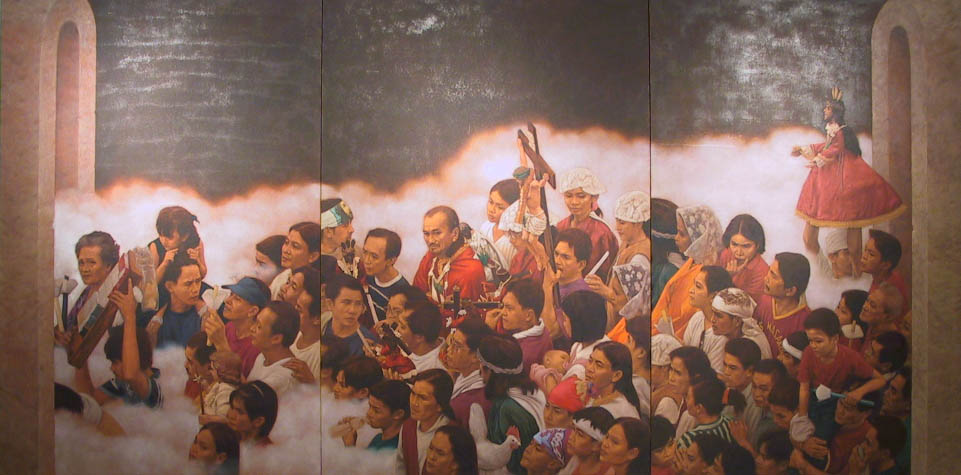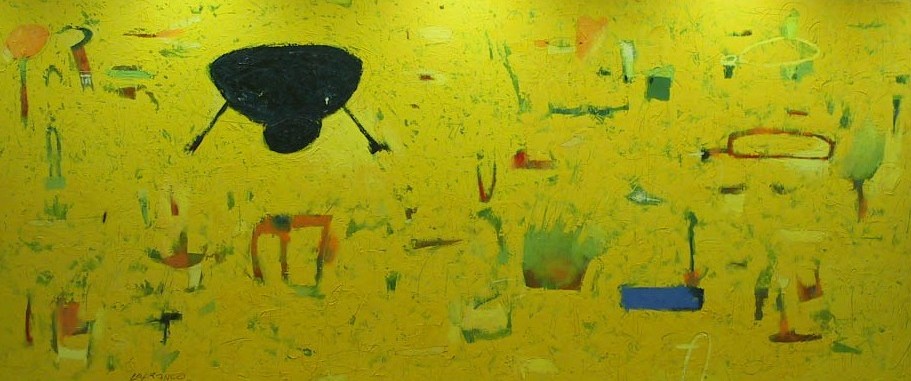
| 
|

|
| " Biyaheng Langit " Oil on Wood 6 x 12 inches 2002 |
Alfredo Esquillo, Jr. depicts a procession for the Black Nazarene of the Quiapo Church. It may appear as a harmless representation of an all-too familiar scene, until we notice an intimation of the two doors from both ends that mirror each other and frame the event, suggesting that entrance and exit are the same, making the itinerant ritual and the gospel it preaches iterative as well. The artist believes that the anting-anting is a mysterious possession, and he asks: How does it acquire power and provide power. Esquillo finds the answer in faith, and according to him, where there is faith, there is salvation, real or imaginary, eternal or temporary.
| 
| 
|

| 
|

|
| " Probado " Mixed Medium on Canvas 6 x 14 inches 2002 |
Joseph Ermi Lofranco appropriates yellow, which is the color of the original EDSA and its jaundiced centrist politics, as a color of ideological seduction that invites blind devotion and affirmation. In Filipino folklore, it is a color of the angels, innocence, youth, and celebration. The artist abstracts this scenario and positions his eye from above, like a hovering observer that gathers a perspective of mass action from below.
| 
| 
|

